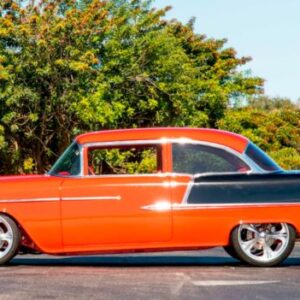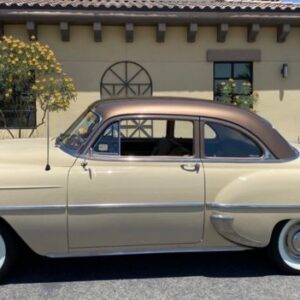The 1938 Bugatti Type 57 Atlantic is a legendary and highly sought-after classic car. It is considered one of the most beautiful and iconic automobiles ever built.

The Bugatti Type 57 Atlantic represents the pinnacle of automotive design and craftsmanship in the pre-war era. Its rarity, timeless beauty, and historical significance have solidified its place among the most revered classic cars of all time.
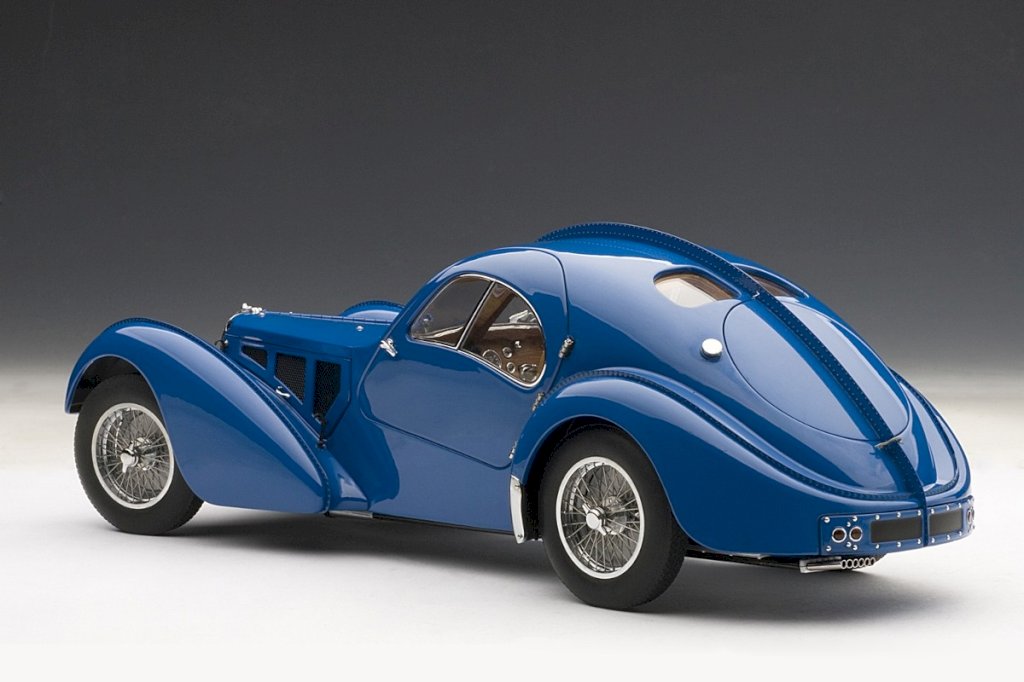
1. Limited Production
Only four examples of the Type 57 Atlantic were ever produced. Each car was individually handcrafted, making it an exclusive and rare vehicle.
2. Rarity and Value
Due to its limited production and timeless design, the Bugatti Type 57 Atlantic is one of the most valuable and coveted classic cars in the world. In fact, one of the four original Atlantics, known as the “La Voiture Noire,” holds the record for the most expensive car ever sold, fetching a staggering price of over $18 million at auction.
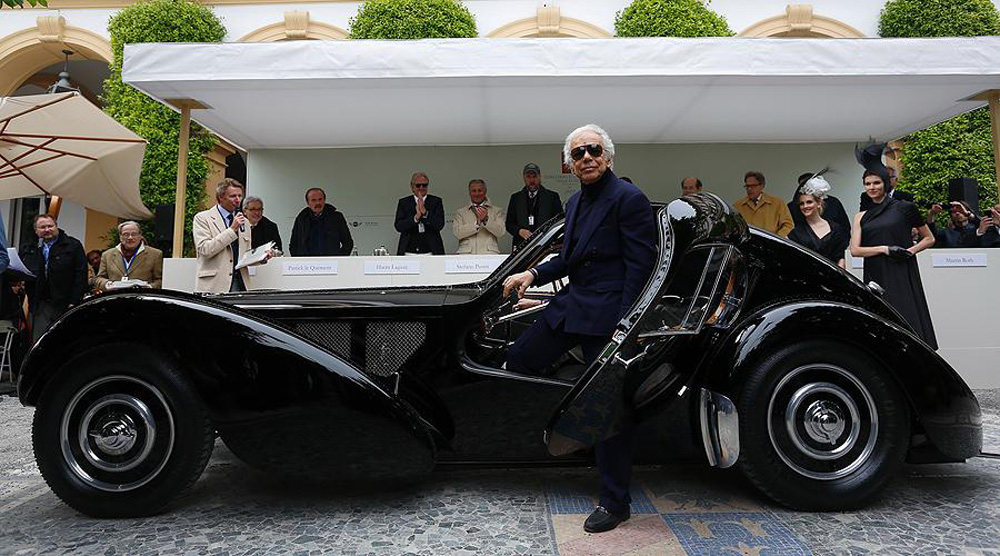
3. Missing Atlantic
Out of the four original Atlantics produced, one car, the “Jean Bugatti Atlantic” with chassis number 57453, is currently missing and has been the subject of numerous searches and investigations over the years. Its whereabouts remain a mystery, and it is considered one of the most sought-after lost cars in automotive history.
4. Exterior Design
Teardrop Shape
The Type 57 Atlantic has a distinct teardrop-shaped body, characterized by its smooth and flowing lines. The front of the car tapers to a point, while the rear widens gradually, creating a sense of movement even when the car is stationary.

Dorsal Seam
One of the defining features of the Atlantic is the prominent dorsal seam that runs along the roof of the car. This seam extends from the tip of the hood to the rear of the vehicle, accentuating the elongated and streamlined profile.
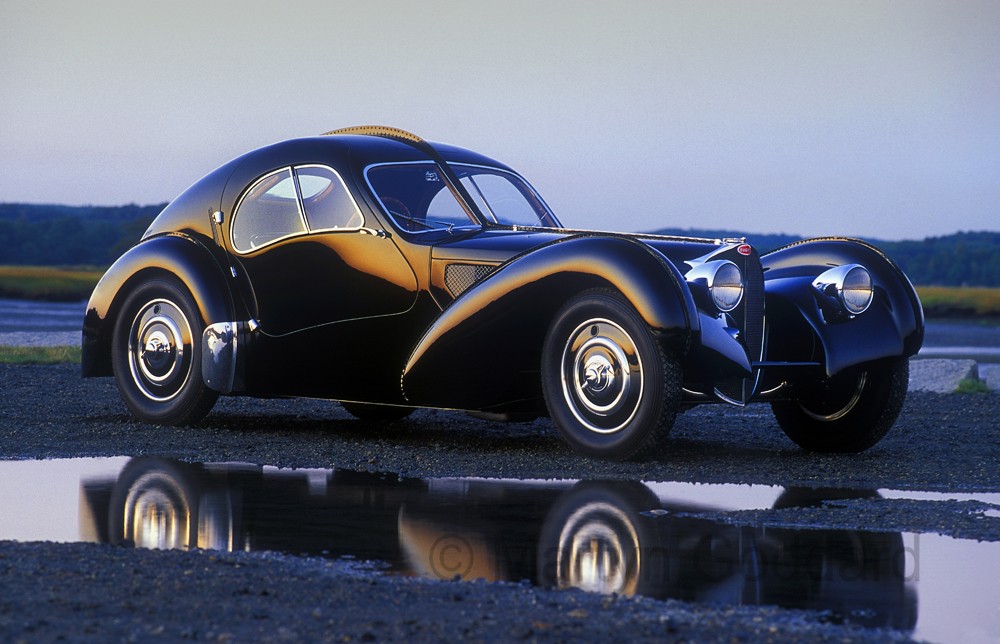
Curved Windscreen
The Atlantic features a curved, one-piece windscreen that seamlessly integrates into the overall shape of the car. The absence of a center pillar enhances visibility and contributes to the car’s sleek appearance.

Grille
The front grille of the Type 57 Atlantic is narrow and elongated, with horizontal bars that emphasize the car’s width. The Bugatti badge sits proudly at the center, surrounded by the grille’s intricate design.
Fenders
The Atlantic has subtly flared fenders that blend harmoniously with the body. The fenders gracefully curve around the wheels, adding a touch of elegance to the overall design.

Rear End
At the rear, the Type 57 Atlantic showcases a rounded and smoothly contoured shape. The car features unique, elongated rear fenders that sweep upward and blend with the roofline, creating a cohesive and balanced aesthetic.

Attention to Detail
The design of the Type 57 Atlantic showcases meticulous attention to detail. From the carefully crafted chrome accents to the seamless integration of various body panels, every element of the car’s design exudes craftsmanship and sophistication.
5. Interior Design
Fine Materials
The Type 57 Atlantic featured a lavish interior crafted with high-quality materials. Fine leather upholstery, often in rich and deep tones, adorned the seats, door panels, and other interior surfaces. The use of genuine wood trim was also common, adding warmth and sophistication to the cabin.

Dashboard
The dashboard of the Type 57 Atlantic was typically elegant and minimalist in design. It featured a cluster of gauges and instruments placed in front of the driver, providing information on speed, engine revs, fuel level, and other essential parameters. The gauges were often set in a polished metal or chrome bezel for a stylish touch.
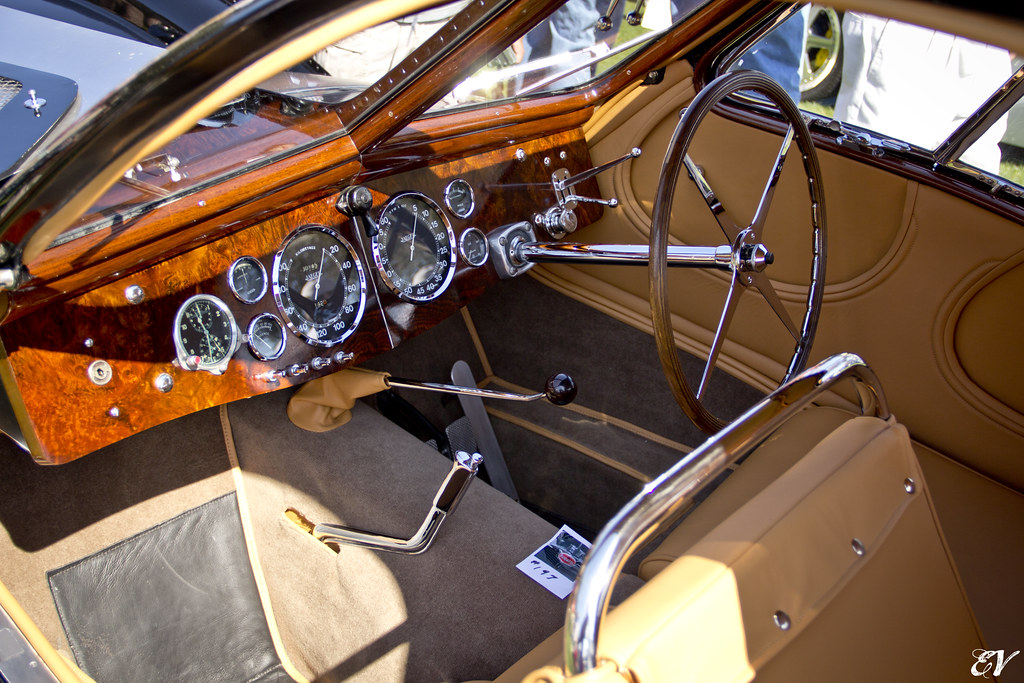
Steering Wheel
The steering wheel of the Type 57 Atlantic was a work of art in itself. It was typically a large and slender wheel, often wrapped in leather, with a center emblem featuring the Bugatti logo. The design of the steering wheel was both functional and aesthetically pleasing, complementing the overall interior styling.
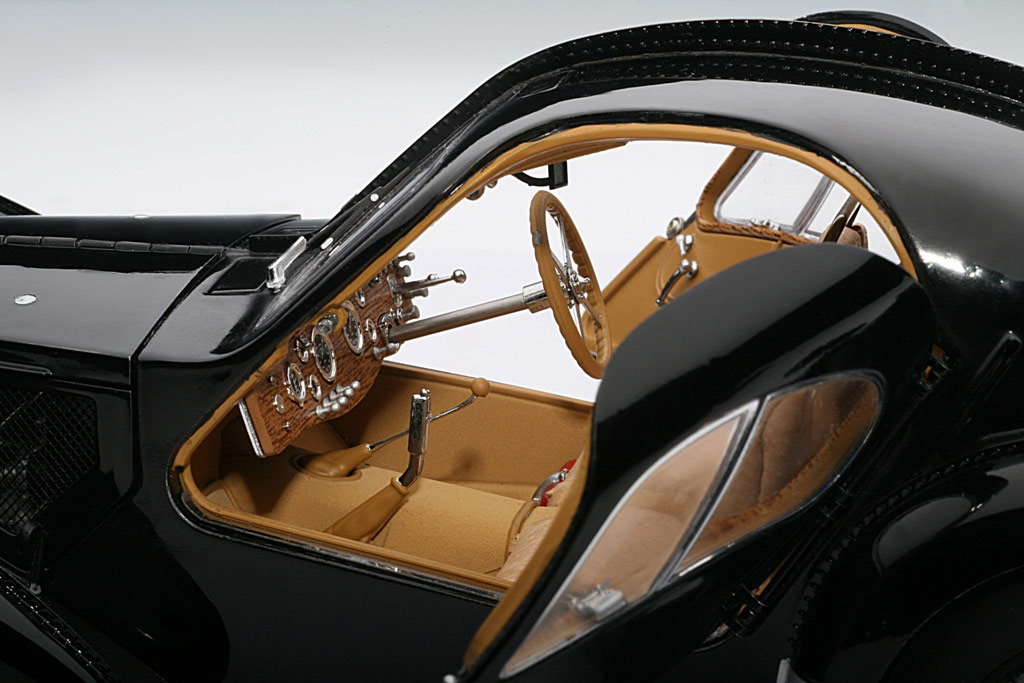
Seating
The Type 57 Atlantic offered seating for two passengers in a spacious and comfortable cabin. The seats were well-padded and contoured to provide support during long drives. The upholstery materials and color schemes could vary depending on the owner’s preferences and customization choices.
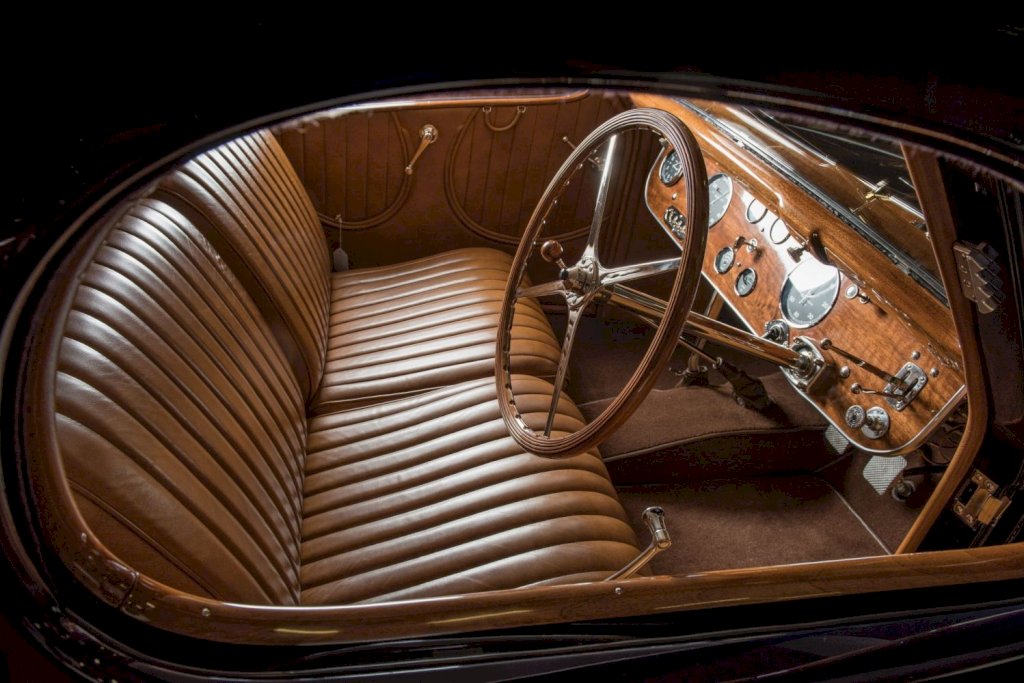
Attention to Detail
The interior of the Type 57 Atlantic showcased meticulous attention to detail. From intricate stitching on the seats to the use of contrasting materials and finishes, every element was carefully crafted to create a luxurious and harmonious environment.

6. Engine and Performance
The 1938 Bugatti Type 57 Atlantic was not only a masterpiece in terms of design but also in terms of engineering and performance for its time.
Engine
The Type 57 Atlantic was equipped with Bugatti’s 3.3-liter inline-eight engine. This advanced engine featured an overhead camshaft design and was constructed with high-quality materials to ensure both durability and performance.
Supercharger
The Type 57 Atlantic’s engine was fitted with a Roots-type supercharger. The supercharger helped to increase the engine’s power output by compressing the air-fuel mixture before it entered the combustion chambers, resulting in improved performance.
Power Output
The inline-eight engine produced around 200 horsepower, which was quite impressive for its time. This power output, combined with the car’s lightweight construction, allowed for brisk acceleration and high top speeds.
Top Speed
The Type 57 Atlantic was capable of reaching a top speed of approximately 125 mph (200 km/h). This was a remarkable achievement for a road-going car in the late 1930s.

Handling and Suspension
The Type 57 Atlantic featured advanced suspension technology for its time, with independent front suspension and a live rear axle. This setup, combined with the car’s low center of gravity, helped to provide good handling characteristics and a comfortable ride.

Gearbox
The Atlantic was typically fitted with a four-speed manual gearbox, allowing the driver to fully exploit the engine’s power and torque. The gearbox was positioned at the rear of the engine, which helped to achieve a better weight distribution.
Brakes
The Type 57 Atlantic featured hydraulic drum brakes on all four wheels. While drum brakes are not as effective as modern disc brakes, they were a standard braking technology during that era.
Construction
The body of the Type 57 Atlantic was made of lightweight magnesium alloy, known as “elektron.” This material was challenging to work with and required skilled craftsmanship, adding to the car’s exclusivity.
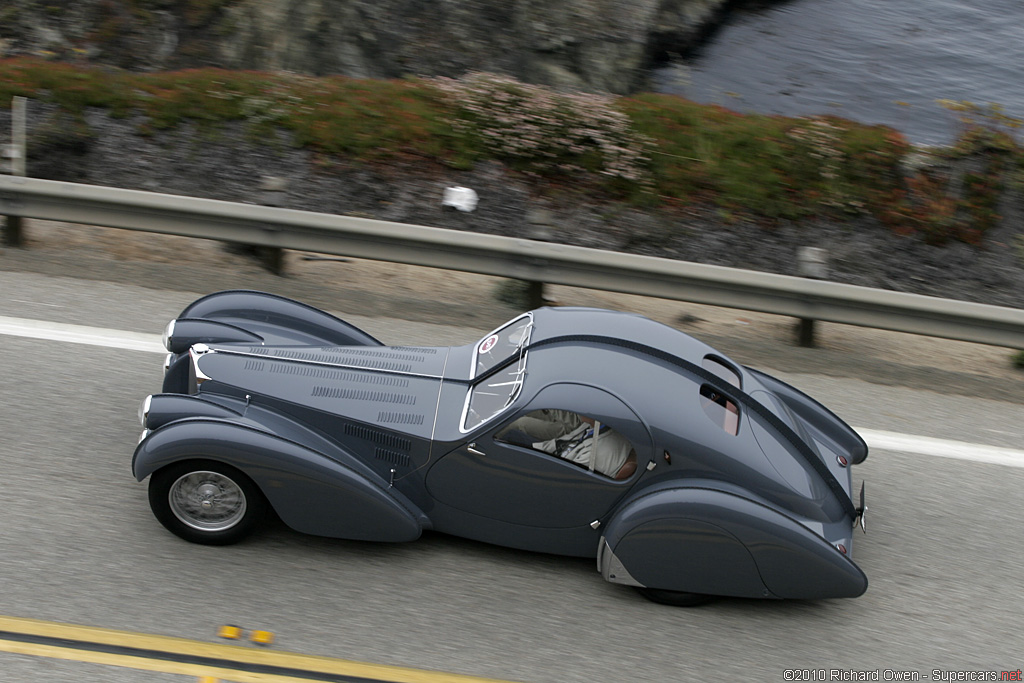
The 1938 Bugatti Type 57 Atlantic is a stunning example of automotive design, capturing the essence of artistry and elegance. Its timeless beauty and distinctive features have made it an enduring symbol of automotive excellence.

